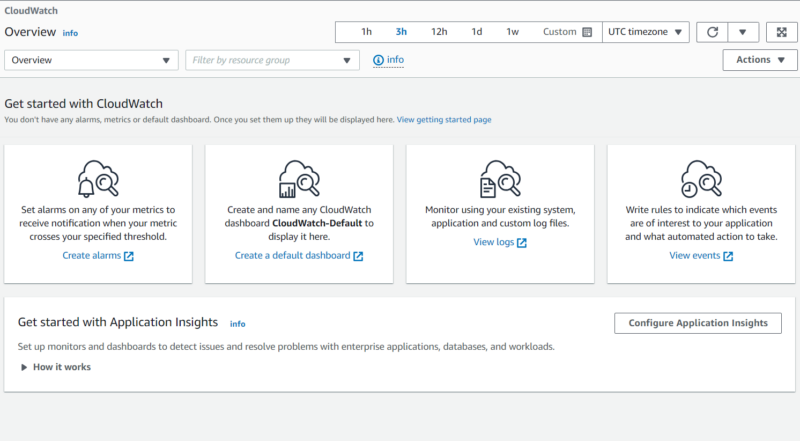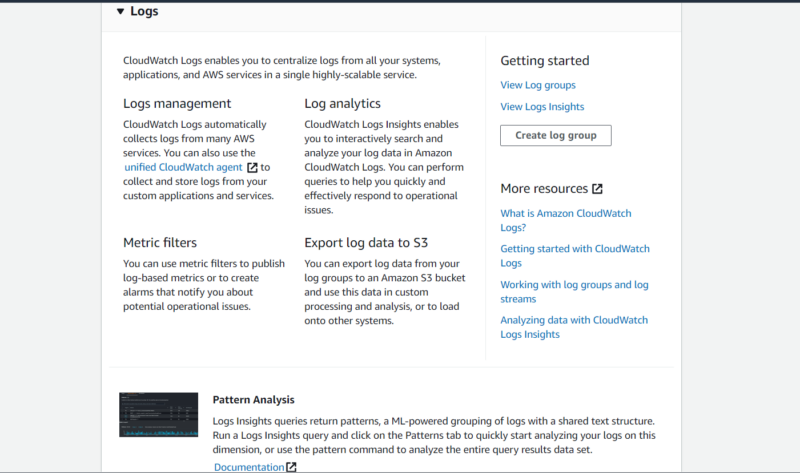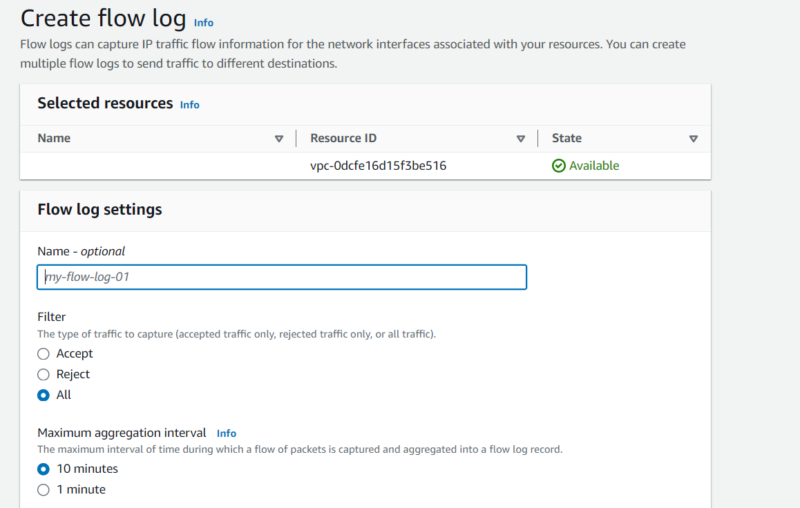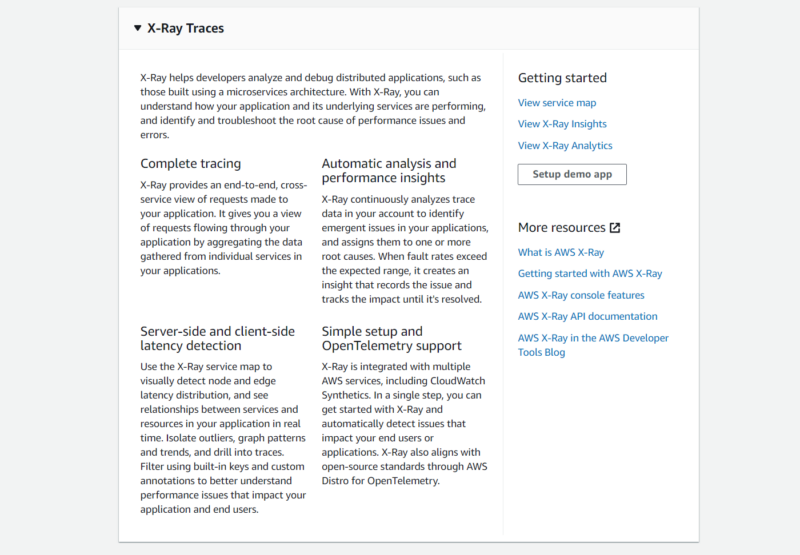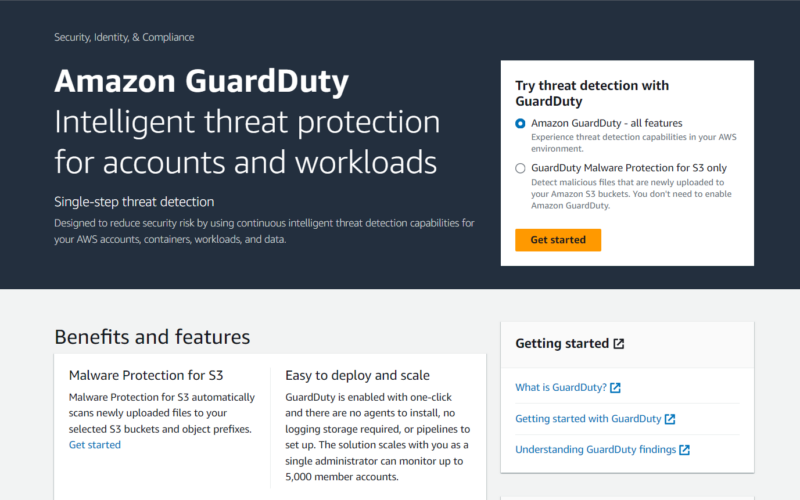If you want to understand AWS Config vs CloudTrail better, this guide will break it all down. AWS Config is a configuration monitoring and assessment tool; it keeps a record of changes that impact how resources are set up. On the other hand, AWS CloudTrail is a logging tool; it tracks AWS API calls, as well as user and role activities in an AWS environment.
The primary difference between CloudTrail vs AWS Config is the type of data that they track; Config tracks configuration data, while CloudTrail records API and user activity data. Apart from that, data captured by CloudTrail is typically more detailed compared to AWS Config records.
The following table highlights the differences between AWS Config and AWS CloudTrail:
| Factors: | AWS Config | AWS CloudTrail |
|---|---|---|
| Reported Events | Configuration changes, including creation, updates and deletion events | Management, insight & data events |
| Configuration Changes | Reports & monitors configuration changes | Reports, monitors & logs activities (mainly API events)
May indirectly provide insight into configuration changes |
| Compliance & Security | Primarily aids compliance, but is also useful for security | Primarily aids security but also works toward compliance |
| Supported AWS Services | Supports various AWS services, including Amazon EC2, ECR, ECS, Cognito, CloudWatch and CodeGuru
Doesn’t support features like the ECS service, ECS clusters, CodeCommit repository or CodDeploy app |
Supports various services, including EC2, CloudWatch, Connect, ECS, EKS & S3
Doesn’t support features like Amazon VPC endpoint policy-specific events or AWS Import/Export |
| Use Cases | Resource configuration inventory, configuration compliance evaluation & simple troubleshooting | Security analysis, events auditing & troubleshooting |
| Pricing | Based on the number of configuration items recorded, conformance pack evaluations & active config rule assessments | CloudTrail Lake pricing is based on the volume of data retained
Trails & Insights pricing is based on the number of events |
Using AWS Config and CloudTrail offers comprehensive visibility, enhanced security and better compliance. Troubleshooting is also easier when you combine AWS Config and CloudTrail — you’ll know not only the configuration changes, but also the invoking AWS users or APIs.
What Is AWS Config?
AWS Config is a configuration assessment and tracking tool. It monitors the configurations of your resources in AWS, on-premises servers or other third-party clouds, tracking changes and auditing them for compliance. It’s a way to keep tabs on the setup of your resources and ensure they remain compliant.
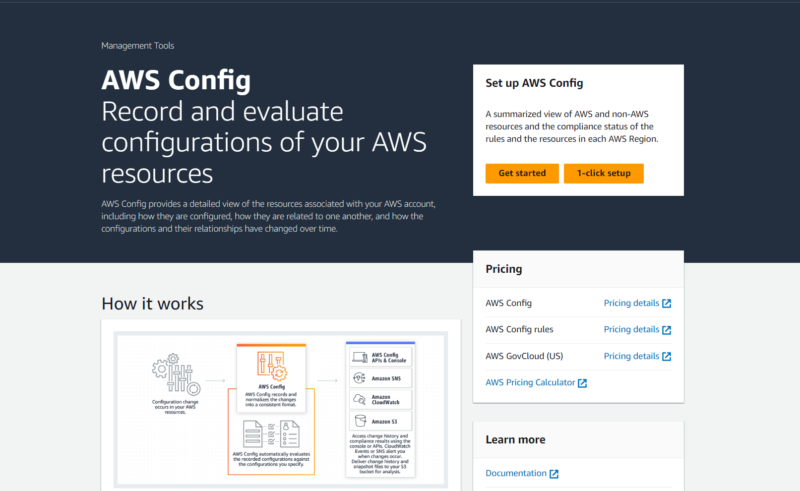
management by pooling configuration data into a unified view.
Besides helping ensure compliance, data from AWS Config can aid in troubleshooting — knowing what the configuration was before an issue started gives some insight into the problem.
How Does AWS Config Work?
AWS Config works by discovering resources in your cloud environment and then tracking configuration changes that are made to those resources. For instance, AWS Config will discover resources like VPC. When it notices configurational changes, like adding a route to a route table, it invokes a descriptive API call.
The API call will provide the updated configuration, which Config will add to the historical configuration data. Config can also deliver updated configuration data to services like Amazon S3 and Amazon SNS.
AWS Config constantly monitors resources, tracking events like configuration creations, updates and deletions. It also takes note of changes in the association between resources in your Amazon Web Services environment.
Generally, when AWS Config detects API calls that make changes to a resource’s configuration, it gets triggered. However, AWS Config also gets triggered with scheduled runs.
What Is AWS CloudTrail?
AWS CloudTrail is a logging service that records the events that happen in AWS, hybrid or multicloud environments. It tracks user activity, role activity and API calls, ensuring that every event is recorded. You could say it notes the “who,” “why” and “when” of activities in AWS cloud, including AWS SDKs, AWS Command Line Tools (CLIs) and AWS Management Consoles.
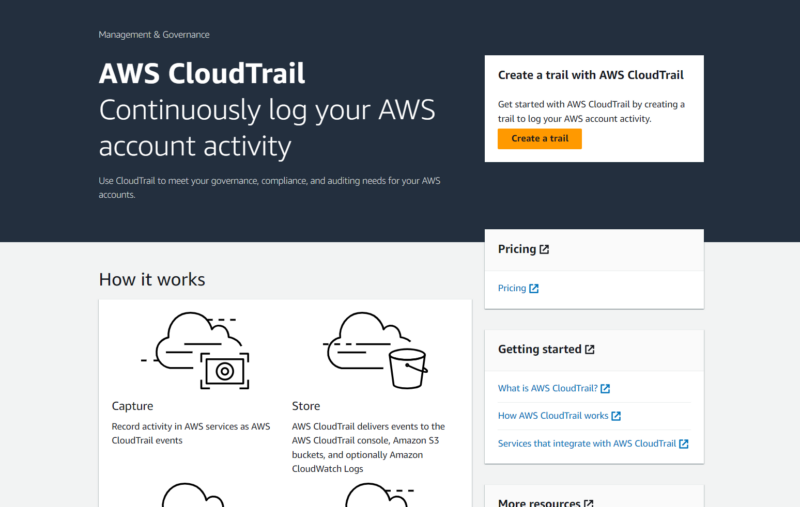
CloudTrail comes in handy during auditing and compliance assessments. It also contributes data that helps improve security posture and sheds light on operational needs.
How Does AWS CloudTrail Work?
AWS CloudTrail works by being constantly on the prowl, listening and capturing events made in your AWS environment. It records management, data and insight events from the management console, SDK, CLI and pretty much any resource.
CloudTrail is primarily triggered by API calls, but it’s constantly looking for any activity in the environment. However, it doesn’t log services without public APIs or public access. CloudTrail wouldn’t work for AWS Import/Export and Amazon VPC endpoint policy-specific events.
CloudTrail events include historical data, and you can also integrate with services like Amazon EventBridge and AWS Organizations.
What Are the Differences Between AWS Config and AWS CloudTrail?
The main differences between AWS Config and AWS CloudTrail are their triggers, reported data, supported services and so on. Here are some details of these differences:
How to Use AWS Config and CloudTrail Together?
AWS Config and CloudTrail work together synergistically, each with strengths that combine to create a well-rounded security, compliance and audit system. AWS Config endlessly monitors and records changes in resource configurations over time by keeping a history. However, AWS CloudTrail tracks API activities (and some non-API ones), taking note of the “who,” “what” and “when.”
When combined, AWS Config and CloudTrail give you comprehensive insights. Config shows you the current configurations and historical records of configuration changes. Then, CloudTrail lets you know who or what made those changes, what action led to the changes and when the changes happened.
Setting Up AWS Config and CloudTrail Together
- Enable AWS Config and Define Config Rules: AWS CloudTrail is enabled in your AWS account by default, but AWS Config isn’t. To use them together, enable AWS Config. With Config enabled, you may choose to use AWS config rules (managed rules), or you could define custom config rules based on your configuration policies.
- Add Amazon EventBridge and Amazon SQS: When setting up AWS Config and CloudTrail together, you need three services to relay the configuration change events from Config to CloudTrail: Amazon EventBridge, SQS and Lambda.
Amazon EventBridge captures change events from the AWS Config recorder and passes the message to an SQS queue.
- Add AWS Lambda: Lambda polls the message from the SQS queue, processes it and triggers the CloudTrail LookupEvents API.
Using the resource identifier it gets from Lambda, CloudTrail LookupEvents API searches for and returns API events related to the resource. Next, Lambda gets the details of the API events from CloudTrail and parses them into plain text for the next step.
- Add a Notification and Storage Service: The parsed event details from Lambda could be sent to a notification service like Amazon SNS or a storage service like Amazon S3 bucket.
What Are the Benefits of Using AWS Config and CloudTrail Together?
The main benefits of using both AWS config and CloudTrail are enhanced cloud computing security, comprehensive compliance and improved troubleshooting.
- Enhanced security: When used together, Config and CloudTrail offer information for correlating configuration changes to the user, role or service that initiated them. They also help you figure out how and when these changes were made. This comprehensive knowledge enables you to detect and resolve suspicious activities much more swiftly and efficiently. Of course, this efficiency also enhances your cloud computing security.
- Comprehensive compliance: With Config ensuring that your resources comply with defined policies and CloudTrail demonstrating user adherence, compliance is more thorough when you use AWS Config and CloudTrail together.
- Improved troubleshooting: It’s much easier to figure out root causes and resolve them when using Config and CloudTrail. Config notifies you about the changes that occurred prior to an issue, while CloudTrail informs you of the actions that led to those changes. This minimizes the chances of a wild goose chase.
What Are the Main Differences Between AWS CloudWatch, Config and CloudTrail?
The main differences between AWS CloudWatch, Config and CloudTrail involve their data collection and use cases.
- Data: AWS CloudWatch collects, evaluates and reports data about the health and performance of services. Config focuses on configuration data, and CloudTrail mostly monitors API activity.
- Use Cases: CloudWatch monitors application performance, identifies optimization opportunities, sets performance alerts and assists with troubleshooting. Config is used for configuration management, configuration analysis and compliance assessment, and CloudTrail works for security and compliance audits, investigations and tracking.
What Are the Different AWS Services for Logging and Monitoring?
There are various AWS services for logging and monitoring, including AWS CloudWatch, AWS CloudWatch Logs, AWS CloudTrail, VPC Flow Logs, Amazon GuardDuty and AWS X-Ray.
Final Thoughts
The primary difference between AWS Config and AWS CloudTrail involves the data that they handle: Config handles configuration state data, while CloudTrail logs API activities. Individually, these services are useful for compliance, security and troubleshooting; but when used together, they’re even better.
What’s your go-to configuration management tool in the cloud? In your opinion, what cloud monitoring or logging tool is the most innovative so far? Let us know your thoughts in a comment below, and as always, thank you for reading.
FAQ: AWS CloudTrail vs Config
-
CloudTrail is an activity logging service, while Config is a configuration monitoring service.
-
While AWS Config monitors configuration states, CloudWatch monitors health and performance.
-
CloudFormation is an AWS Infrastructure-as-Code tool, and Config is a configuration monitoring tool.
-
CloudWatch monitors health and performance, whereas CloudTrail monitors activity (mostly AWS API activity).
{“@context”:”https:\/\/schema.org”,”@type”:”FAQPage”,”mainEntity”:[{“@type”:”Question”,”name”:”What Is the Difference Between CloudTrail and AWS Config?”,”acceptedAnswer”:{“@type”:”Answer”,”text”:”
CloudTrail is an activity logging service, while Config is a configuration monitoring service.\n”}},{“@type”:”Question”,”name”:”What Is the Difference Between AWS Config and CloudWatch?”,”acceptedAnswer”:{“@type”:”Answer”,”text”:”
While AWS Config monitors configuration states, CloudWatch monitors health and performance.\n”}},{“@type”:”Question”,”name”:”What Is the Difference Between AWS Config and CloudFormation?”,”acceptedAnswer”:{“@type”:”Answer”,”text”:”
CloudFormation is an AWS Infrastructure-as-Code tool, and Config is a configuration monitoring tool.\n”}},{“@type”:”Question”,”name”:”What Is the Difference Between AWS CloudWatch and AWS CloudTrail?”,”acceptedAnswer”:{“@type”:”Answer”,”text”:”
CloudWatch monitors health and performance, whereas CloudTrail monitors activity (mostly AWS API activity).\n”}}]}
The post AWS Config vs CloudTrail: Comparison Based on Reporting, Configuration, Compliance, Pricing and Use Cases appeared first on Cloudwards.

